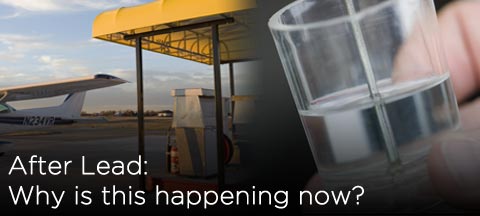
The Environmental Protection Agency’s advanced notice of proposed rulemaking (ANPRM) that was published last spring, filed in response to a petition from an environmental group, made many in the industry realize that the beginning of the end was at hand for 100LL even though work exploring unleaded fuels has been ongoing. In the ANPRM, the EPA acknowledged a “significant logistical challenge” and a technical hurdle for changing over lead-fuel-burning aircraft to a new fuel. On April 21, AOPA and other industry organizations issued a statement vowing to continue working with the EPA and the FAA on a “realistic standard” for reducing aircraft lead emissions and a timetable.
For pilots who might be inclined to resist the change, AOPA President and CEO Craig Fuller explained in a June 17 AOPA Live interview that for many years the EPA, by recognizing “the unique demands of aircraft engines” has taken a “responsible position,” essentially exempting aviation from decades of other initiatives to remove lead from fuel.
So, what’s changed?
Air quality standards, for one thing. For another, a petition—and potential lawsuit—against the EPA by the environmental organization Friends of the Earth. They, too, issued a statement about the ANPRM, in which they criticized the EPA’s approach to timelines for eliminating lead: “It has been more than 14 years since the EPA required the complete phase-out of lead in gasoline for cars. The final chapter on lead in gas will not be written until lead is removed from general aviation aircraft fuel.”
On June 24 the avgas stakeholders, collectively the General Aviation Avgas Coalition, met with the aviation press via the Internet to talk about GA and a no-lead future. The coalition includes AOPA, the American Petroleum Institute, the Experimental Aircraft Association, the General Aviation Manufacturers Association, the National Air Transportation Association, the National Business Aviation Association, and the National Petrochemical and Refiners Association.
The group outlined its “ Future Avgas Strategy and Transition Plan,” which brings near-term reduction lead emissions together with strategic planning for the eventual transition to unleaded fuel.
All of this leads pilots to ask another question: Will TEL be available as long as it is needed?
Responding to that question was the only party who could do so authoritatively. Innospec, a U.K.-based specialty chemicals company, is the only producer of tetraethyl lead for avgas. The firm said in July that it would continue to produce the additive as long as necessary, with its capability for scalable production—a key component of an orderly transition.
“Leaded avgas will not disappear overnight,” said AOPA Vice President of Regulatory Affairs Rob Hackman. “With a stable supply of 100LL now, we have the time to make well-researched, well-thought-out decisions that will put general aviation in the best position in the long term.”
That was also the substance of the industry coalition’s response to the EPA in formal comments submitted Aug. 27. “There is not enough data nor is there a requirement for the Environmental Protection Agency to find that avgas represents an ‘endangerment’ under the Clean Air Act, and careful study is needed before any decision about an alternative to leaded fuel can be reached,” the coalition said in a statement, noting that fuel-performance issues carry “life and death consequences” for aircraft.
With the process picking up steam in 2010, AOPA was on the scene where R&D is taking place, such as General Aviation Modifications Inc.’s work with a fuel it calls G100UL; and a September visit to Swift Enterprises, developer of a biomass-based avgas they call 100SF. That fuel underwent testing at the FAA’s William J. Hughes Technical Center, which has a large role to play in future developments. The center recently acquired a Piper PA31-350 that will provide performance data not obtainable in the laboratory.
Alongside fuels development, development of new engines and new methods of electronic engine-control solutions are moving ahead. Some of these powerplants are already flying. And with research a keystone to conversion, AOPA has asked that Congress back the administration’s request to fund an additional $2 million for FAA research and development in 2011.
With so much quite literally on the drawing board, conversion timetables are premature. But an early picture of the future is beginning to emerge.
Fuller offered this analogy about what’s involved as GA starts down the road to unleaded flight: “Members of our technical group here at AOPA liken the search for a replacement fuel to a Rubik’s Cube—putting one piece of the puzzle where it belongs can knock two or three other pieces out of alignment.”
Solving that puzzle, he said, will be accomplished when GA has a fuel it can rely on for decades, just as it has relied on 100LL avgas.
1 2 3


